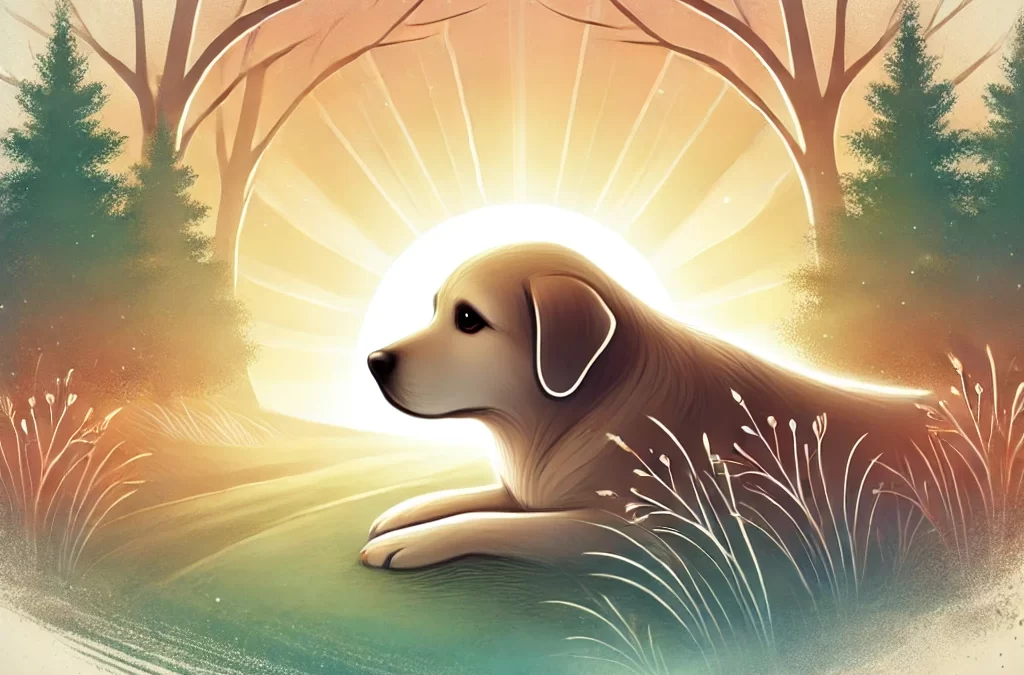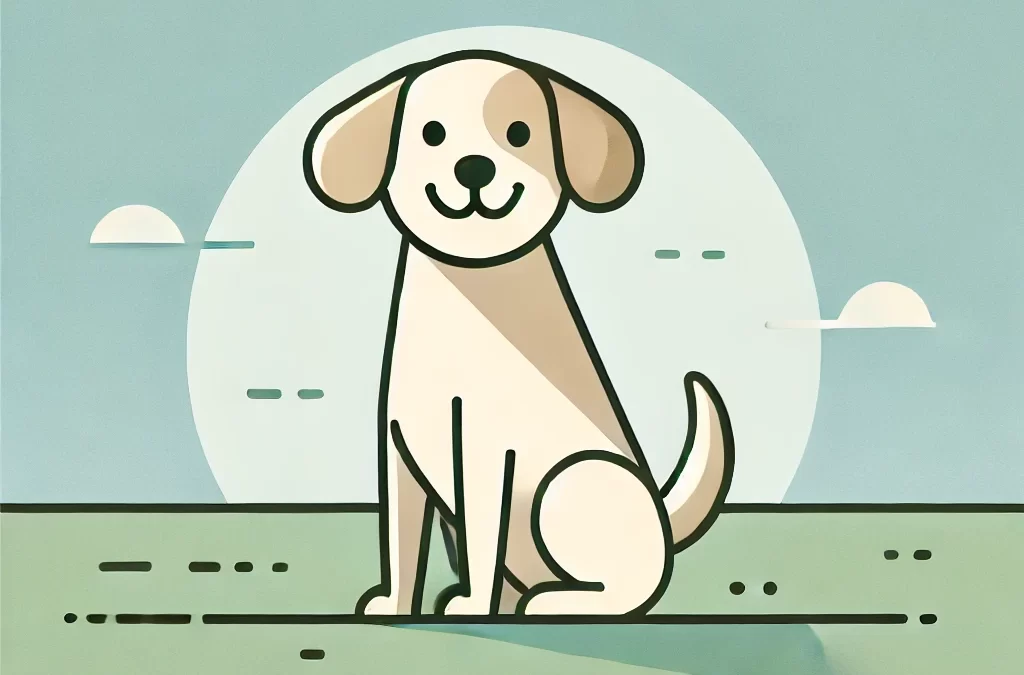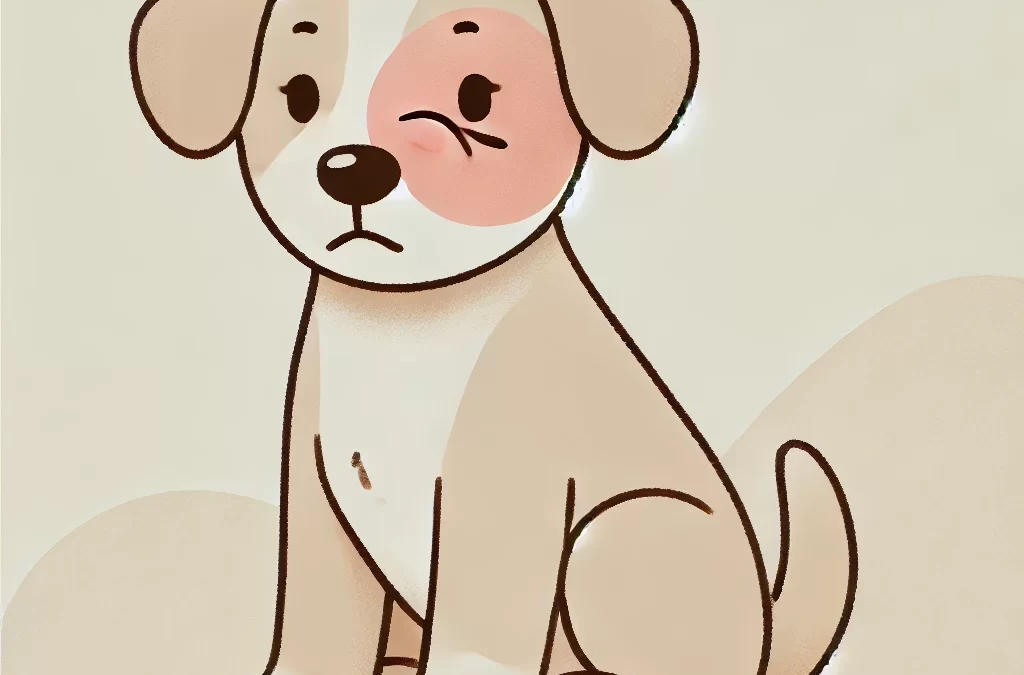
par TCMVET | 22 décembre 2024 | Cancer et tumeurs du chien
Les glandes mammaires des chats, souvent négligées dans les discussions sur la santé féline, jouent un rôle essentiel dans leur biologie et leur bien-être. Si la plupart des propriétaires de chats savent que ces glandes sont essentielles pour l'allaitement des chatons, leur importance va bien au-delà de la lactation. Cet article plonge dans le monde fascinant des glandes mammaires félines, en explorant leur anatomie, leur fonctionnalité et leurs problèmes de santé, tout en offrant des informations uniques sur leurs soins.
La merveille de l'anatomie des glandes mammaires
Les chats, comme tous les mammifères, possèdent des glandes mammaires destinées à produire du lait pour leurs petits. Une chatte possède généralement quatre paires de glandes disposées en deux rangées le long de la partie inférieure de son corps. Chaque glande contient :
- Lobules et canaux : Responsables de la production et du transport du lait.
- Tétines (mamelons) : Sortie externe du lait.
- Tissu de soutien : comprend la graisse et le tissu conjonctif pour fournir une structure.
Les glandes mammaires sont sensibles aux hormones, avec des changements déclenchés par la grossesse, l’allaitement et certains problèmes de santé.
Plus que du lait : les rôles méconnus des glandes mammaires
Bien que leur fonction première soit la production de lait, les glandes mammaires sont également essentielles pour signaler l'état reproductif et hormonal d'une chatte. Par exemple :
- Indicateurs hormonaux : Un gonflement ou une sensibilité pendant les cycles de chaleur indique une activité d’œstrogène et de progestérone.
- Réponse au stress : ces glandes peuvent également réagir au stress, entraînant parfois un gonflement non lié à la lactation.
Affections courantes des glandes mammaires : ce que les propriétaires doivent savoir
Mastite
La mammite est une infection des glandes mammaires, qui survient souvent chez les chattes allaitantes. Les symptômes comprennent des rougeurs, un gonflement et des douleurs. Dans les cas graves, des abcès peuvent se former, nécessitant une intervention vétérinaire.
Hyperplasie fibroadénomateuse
Ce gonflement bénin mais spectaculaire des glandes survient chez les jeunes femelles non stérilisées ou pendant la grossesse. Bien qu'il ne soit pas dangereux, il peut être source d'inconfort et nécessite une surveillance.
Tumeurs mammaires
Parmi les pathologies les plus graves, les tumeurs mammaires représentent 17% de tous les cancers félins. Contrairement aux chiens, où de nombreuses tumeurs sont bénignes, les tumeurs mammaires félines sont malignes dans 85 à 90% des cas, nécessitant souvent un traitement agressif.
La menace silencieuse : reconnaître les premiers signes de tumeurs mammaires
La détection précoce des tumeurs mammaires est essentielle pour un traitement efficace. Soyez attentif à ces signes subtils :
- Petites bosses fermes près des glandes mammaires.
- Gonflement ou asymétrie dans la région mammaire.
- Écoulement des mamelons.
- Ulcération ou rougeur de la peau au niveau des glandes.
Si l’un de ces symptômes est observé, consultez immédiatement un vétérinaire.
Prévention et soins : préserver la santé de votre chat
La stérilisation est importante
La stérilisation des chattes avant leur premier cycle de chaleurs réduit considérablement le risque de développer des tumeurs mammaires. Des études suggèrent que le risque diminue jusqu'à 91% en cas de stérilisation précoce.
Contrôles réguliers
Lors du toilettage de routine, palpez doucement le ventre de votre chat pour vérifier la présence de bosses ou d'anomalies. Une intervention précoce peut sauver des vies.
Nutrition optimale
Une alimentation équilibrée, riche en antioxydants et en acides gras oméga, favorise la santé générale et réduit potentiellement les risques de cancer.
La gestion du stress
Minimisez les facteurs de stress environnementaux pour prévenir le gonflement lié aux hormones et d’autres complications.
Dernières pensées
Les glandes mammaires des chats sont plus que des organes fonctionnels : elles sont une fenêtre sur la santé globale d'un chat. Comprendre leur anatomie et surveiller les problèmes potentiels peut garantir à votre ami félin une vie saine et heureuse. Une détection précoce, des soins préventifs et une attention bienveillante sont essentiels pour préserver cet aspect vital du bien-être de votre chat.

par TCMVET | 22 décembre 2024 | Cancer et tumeurs du chien
Prendre la décision d'euthanasier un chien bien-aimé atteint d'un cancer est l'un des choix les plus déchirants qu'un propriétaire d'animal puisse faire. C'est une question imprégnée d'amour, de culpabilité et du lien inébranlable que nous partageons avec nos compagnons à quatre pattes. Bien que le sujet soit souvent abordé de manière clinique, explorons cette question sensible d'un point de vue unique, qui allie pragmatisme et perception émotionnelle, pour vous aider à prendre une décision fondée sur la compassion et la compréhension.
La réalité du cancer chez les chiens
Le cancer touche près de la moitié des chiens de plus de 10 ans, les symptômes et la progression variant considérablement selon le type et le stade. Si les progrès de la médecine vétérinaire ont rendu les traitements comme la chirurgie, la chimiothérapie et les soins palliatifs plus accessibles, ces options s'accompagnent souvent de défis physiques, émotionnels et financiers. La question cruciale devient alors : quand est-ce que c'est suffisant ?
Changer de perspective : qualité de vie versus quantité de vie
La décision d'euthanasier votre chien doit être prise en fonction de la qualité de vie de votre chien plutôt que de simplement la prolonger. Un chien peut endurer physiquement, mais son moral peut faiblir lorsque la souffrance devient accablante. Voici les facteurs clés à évaluer :
- Gestion de la douleur
Votre chien souffre-t-il constamment malgré les médicaments ? A-t-il du mal à effectuer des activités de base comme marcher ou se coucher confortablement ?
- Appétit et hydratation
Votre chien a-t-il arrêté de manger ou de boire, même lorsqu'on lui offre ses friandises préférées ? Une baisse d'appétit indique souvent que le corps est en train de s'éteindre.
- Niveaux d'énergie
Votre chien apprécie-t-il toujours les activités qu'il aimait autrefois ? Une fatigue chronique et un manque d'intérêt peuvent indiquer un déclin émotionnel et physique.
- Engagement social
Votre chien s'éloigne-t-il de vous et des autres animaux de compagnie ? Les chiens en détresse ont souvent tendance à s'isoler, évitant le contact et l'attention.
- Hygiène et mobilité
Sont-ils incapables de contrôler leur miction ou leurs selles ? La difficulté à se déplacer ou à maintenir une bonne hygiène peut entraîner davantage d'inconfort et de détresse.
Bilan émotionnel : la souffrance silencieuse du propriétaire
Prendre soin d'un chien atteint d'un cancer peut être émotionnellement épuisant. Des nuits blanches, des inquiétudes constantes et le chagrin de voir votre animal décliner peuvent avoir des conséquences néfastes. N'oubliez pas que cette décision ne concerne pas seulement la souffrance de votre chien, mais aussi votre capacité à lui prodiguer des soins sans compromettre votre bien-être.
Un cadre pour la décision : l'échelle HHHHHMM
Les professionnels vétérinaires utilisent souvent l'échelle HHHHHMM (Hurt, Hunger, Hydration, Hygiene, Happiness, Mobility, and More Good Days Than Bad) comme outil pratique pour évaluer la qualité de vie. Noter chaque catégorie peut vous aider à faire une évaluation objective.
Une perspective unique : célébrer la vie tout en se préparant à l'adieu
L'euthanasie n'est pas seulement une fin, c'est aussi l'occasion de faire ses adieux à votre chien en toute tranquillité et sans douleur. Voici comment vous pouvez rendre cette transition significative :
- Créer une liste de choses à faire
Planifiez des activités que votre chien apprécie toujours, même si elles sont simples, comme s'asseoir au soleil ou manger une friandise spéciale.
- Capturez les souvenirs
Documentez ces moments précieux à travers des photos ou des vidéos, célébrant la vie et l'amour de votre chien.
- Faites appel à votre vétérinaire
Travaillez en étroite collaboration avec votre vétérinaire pour comprendre le pronostic de votre chien et discuter des options de fin de vie, y compris l’euthanasie à domicile dans un environnement familier et réconfortant.
- Appuyez-vous sur un réseau de soutien
Connectez-vous avec des amis, des membres de votre famille ou des communautés en ligne qui comprennent le chagrin causé par la perte d’un animal de compagnie.
Les conséquences : trouver la paix et un but
Le vide laissé par la mort d'un chien peut sembler insurmontable. Pour surmonter ce deuil :
- Honorons leur mémoire:Créez un souvenir, comme une empreinte de patte ou une boîte à souvenirs.
- Canalisez votre amour:Envisagez de faire du bénévolat dans un refuge pour animaux ou d’accueillir un chien dans le besoin.
- Donnez-vous du temps:La guérison demande de la patience. Autorisez-vous à faire votre deuil sans jugement.
Réflexions finales : l’acte ultime d’amour
Décider d'euthanasier un chien atteint d'un cancer ne signifie pas abandonner, mais reconnaître que le combat devient injuste. C'est un acte de courage et d'amour inconditionnel qui permet à votre chien de quitter ce monde avec dignité et paix.
Lorsque vous êtes confronté à cette décision, n'oubliez pas : la vie de votre chien a été remplie de vos soins et son décès sera marqué par votre compassion.

par TCMVET | 21 décembre 2024 | Cancer et tumeurs du chien
Lorsque vous remarquez une bosse sur la peau de votre chien, cela peut être alarmant. Pour de nombreux propriétaires d'animaux de compagnie, la première pensée pourrait être « Est-ce un cancer ? » ou « Et si c'était quelque chose de grave ? » L'un des coupables courants de ces bosses chez les chiens est lipomes, tumeurs graisseuses bénignes qui peuvent apparaître sur le corps. Mais sont-elles dangereuses ? Explorons les faits, les mythes et les nuances des lipomes chez les chiens.
Que sont exactement les lipomes ?
Les lipomes sont des excroissances molles et caoutchouteuses qui se développent sous la peau. Ils sont constitués de cellules adipeuses et sont généralement mobiles lorsqu'on les touche doucement. Leur taille et leur emplacement peuvent varier, mais la plupart des lipomes sont inoffensifs. Bien que ces tumeurs graisseuses ne soient généralement pas cancéreuses, l'incertitude qu'elles suscitent chez les propriétaires d'animaux de compagnie est compréhensible, compte tenu de leur apparence mystérieuse.
La bonne nouvelle : les lipomes sont généralement bénins
La bonne nouvelle est que les lipomes sont presque toujours bénins, c'est-à-dire qu'ils ne sont pas cancéreux. La plupart des chiens auront un ou deux lipomes au cours de leur vie, souvent en vieillissant. Ces tumeurs ont tendance à se développer lentement et ne sont généralement pas douloureuses. La majorité des lipomes ne se propagent pas à d'autres parties du corps, ce qui les rend inoffensifs pour la santé générale de votre chien.
Quand les lipomes deviennent-ils problématiques ?
Bien que la plupart des lipomes soient bénins, certains peuvent entraîner des complications s'ils deviennent suffisamment gros ou sont situés dans des zones sensibles. Voici quelques cas où les lipomes peuvent poser problème :
- Pression sur les tissus environnants:Si un lipome devient trop gros, il peut commencer à exercer une pression sur les muscles, les nerfs ou d'autres structures vitales. Cela peut entraîner une gêne, des douleurs ou des difficultés à se déplacer.
- Interférence avec le mouvement:Les lipomes situés sur les pattes ou à proximité des articulations peuvent limiter la mobilité de votre chien. Ils peuvent créer une sensation de lourdeur ou restreindre les mouvements, provoquant une boiterie ou une altération de la démarche.
- Risque de transformation maligne:Bien que rares, certains lipomes peuvent se transformer en liposarcomes, une forme maligne de cancer. Ces formes sont beaucoup moins courantes mais plus agressives. Le risque est plus élevé si le lipome devient anormalement dur, se développe rapidement ou présente des signes de douleur.
Comment savoir si le lipome de votre chien nécessite une attention particulière ?
Bien que la plupart des lipomes soient inoffensifs, une surveillance régulière est essentielle. Si vous remarquez l'un des signes suivants, il est temps de consulter un vétérinaire :
- Croissance rapide:Une augmentation soudaine de la taille pourrait indiquer un problème.
- Douleur ou sensibilité:Si votre chien semble être gêné par le lipome, il peut nécessiter une attention particulière.
- Changements de texture:Un durcissement ou un raffermissement du lipome pourrait être un signal d’alarme.
- De nouveaux grumeaux:Si votre chien développe plusieurs bosses sur une courte période, un examen vétérinaire est recommandé.
Options de traitement : retirer ou ne pas retirer ?
Dans la plupart des cas, les lipomes ne nécessitent aucun traitement. Si le lipome ne provoque aucune douleur ni difficulté, votre vétérinaire peut vous recommander de simplement surveiller la masse. Cependant, dans les cas où le lipome est problématique, que ce soit en raison de sa taille, de son emplacement ou de sa vitesse de croissance, une ablation chirurgicale peut être suggérée. Il s'agit généralement d'une procédure simple, mais comme toutes les interventions chirurgicales, elle comporte certains risques, en particulier chez les chiens âgés.
Prévenir les lipomes : est-ce possible ?
Malheureusement, les lipomes sont principalement génétiques et il n'existe aucun moyen infaillible de les empêcher de se former. Cependant, maintenir un poids santé pour votre chien grâce à une alimentation équilibrée et à un exercice régulier peut réduire le risque de développer de gros lipomes. L'obésité a tendance à exacerber la croissance des tumeurs graisseuses, donc contrôler le poids de votre chien est toujours une bonne mesure préventive.
Réflexions finales : les lipomes ne sont pas l’ennemi
Bien que les lipomes puissent sembler effrayants au premier abord, ils constituent souvent plus une nuisance qu'un danger. Dans la plupart des cas, ils sont bénins et gérables. En restant vigilant et en consultant régulièrement votre vétérinaire, vous pouvez vous assurer que votre chien reste confortable et en bonne santé, quelles que soient les bosses et les bosses qui se forment sur son chemin. Ainsi, même si les lipomes peuvent être inquiétants, n'oubliez pas qu'ils sont rarement une cause d'alarme.

par TCMVET | 21 décembre 2024 | Cancer et tumeurs du chien
Le cancer des sinus chez le chien est une maladie rare mais grave qui affecte les sinus et les tissus environnants. Les sinus sont des espaces remplis d'air situés à l'intérieur du crâne, et bien que le cancer dans ces zones soit rare, il peut néanmoins survenir chez les chiens. Cet article explorera les causes, les symptômes, le diagnostic et les options de traitement du cancer des sinus chez le chien, fournissant des informations utiles aux propriétaires d'animaux qui peuvent être préoccupés par la santé de leur chien.
Qu'est-ce que le cancer des sinus chez le chien ?
Le cancer des sinus désigne la croissance de tumeurs malignes dans les cavités sinusales. Les sinus sont responsables de la production de mucus et de l'humidification de l'air que respire le chien. Lorsque le cancer se développe dans ces zones, il peut entraîner toute une série de problèmes de santé, selon l'emplacement et la gravité de la tumeur. Les cancers des sinus peuvent être soit primaires, provenant des tissus sinusaux eux-mêmes, soit secondaires, ce qui signifie qu'ils se sont propagés à partir d'autres zones du corps, telles que les voies nasales ou la bouche.
Le type de cancer des sinus le plus courant chez les chiens est adénocarcinome, qui est un cancer des tissus glandulaires. D'autres types peuvent inclure carcinome squameux et fibrosarcome, chacun ayant des modèles de croissance et des réponses au traitement différents.
Causes et facteurs de risque
La cause exacte du cancer des sinus chez le chien n’est pas entièrement comprise, mais plusieurs facteurs peuvent contribuer à son développement :
- Genetics:Certaines races peuvent être prédisposées à développer des cancers, notamment celles de la région des sinus. Certaines races au museau plus long, comme les Dobermans, les Bergers allemands et les Boxers, peuvent être plus à risque.
- Facteurs environnementaux:L'exposition aux toxines, aux produits chimiques et aux polluants peut augmenter le risque de développer des cancers en général. Les chiens vivant dans des zones polluées ou exposés à la fumée secondaire peuvent être plus sensibles.
- L'âge:Les chiens plus âgés sont plus susceptibles de développer un cancer sous diverses formes, notamment le cancer des sinus. Cela est dû à l'effet cumulatif des dommages cellulaires au fil du temps.
- Inflammation ou infection chronique:Les chiens souffrant d’infections des sinus ou de problèmes nasaux de longue date peuvent avoir un risque accru de développer des tumeurs dans les cavités des sinus.
Symptômes du cancer des sinus chez le chien
Les symptômes du cancer des sinus peuvent être subtils et facilement confondus avec ceux d'autres affections, ce qui entraîne souvent un retard de diagnostic. Certains signes courants du cancer des sinus chez le chien comprennent :
- Écoulement nasal:Un écoulement nasal persistant ou sanglant est l’un des symptômes les plus courants du cancer des sinus.
- Gonflement ou déformations du visage:Un gonflement notable autour du visage, des yeux ou du nez pourrait indiquer une tumeur se développant dans les sinus.
- Difficulté à respirer:Les tumeurs peuvent bloquer le flux d’air normal, provoquant une respiration difficile ou bruyante.
- Éternuements ou toux:Des éternuements ou une toux constants peuvent être un signe d’irritation des cavités des sinus.
- Diminution de l'appétit ou perte de poids:Comme pour de nombreux cancers, les chiens atteints d’un cancer des sinus peuvent perdre l’appétit et par la suite perdre du poids.
- Problèmes oculaires:Les tumeurs situées près des sinus peuvent exercer une pression sur les yeux, entraînant des changements de la vision ou des yeux exorbités.
- Léthargie:Les chiens souffrant d’un cancer des sinus peuvent présenter des signes de fatigue ou de faiblesse.
Étant donné que ces symptômes se chevauchent avec de nombreuses autres maladies, il est important pour les propriétaires d’animaux de compagnie de consulter un vétérinaire pour un diagnostic précis.
Diagnostic du cancer des sinus chez le chien
Le diagnostic du cancer des sinus chez le chien implique généralement une combinaison d'examens cliniques, d'examens d'imagerie et de biopsies. Le processus peut inclure :
- Examen physique:Le vétérinaire procédera à un examen approfondi, à la recherche de signes d’écoulement nasal, de gonflement ou de douleur.
- Imagerie:Les rayons X, les tomodensitométries ou les IRM peuvent aider à visualiser les sinus, à détecter toute excroissance anormale et à déterminer l’étendue du cancer.
- Biopsie:Un échantillon de tissu peut être prélevé sur la tumeur suspectée pour confirmer le diagnostic et déterminer le type de cancer.
- Blood Tests:Des analyses sanguines peuvent être effectuées pour évaluer l’état de santé général du chien et rechercher des signes d’infection ou de dysfonctionnement d’organe qui pourraient être liés au cancer.
Options de traitement pour le cancer des sinus chez le chien
Le traitement du cancer des sinus chez le chien dépend du type, de la localisation et du stade du cancer, ainsi que de l'état de santé général du chien. Les principales options de traitement sont les suivantes :
- Chirurgie:Si la tumeur est localisée et accessible, une intervention chirurgicale peut être recommandée pour retirer la tumeur cancéreuse. Cependant, en raison des structures délicates entourant les sinus, la chirurgie peut être difficile et peut ne pas être possible dans tous les cas.
- Radiothérapie:Pour les tumeurs qui ne peuvent pas être retirées chirurgicalement ou lorsque la chirurgie n'est pas envisageable, la radiothérapie peut être utilisée. Ce traitement vise à réduire la tumeur et à atténuer les symptômes en ciblant les cellules cancéreuses avec un rayonnement à haute énergie.
- Chimiothérapie:La chimiothérapie est parfois utilisée en association avec la radiothérapie ou la chirurgie, surtout si le cancer s'est propagé au-delà des sinus. L'objectif est de tuer les cellules cancéreuses ou de les empêcher de se développer davantage.
- Soins palliatifs:Dans les cas où le cancer est avancé ou que la chirurgie n'est pas possible, des soins palliatifs peuvent être proposés pour gérer les symptômes et améliorer la qualité de vie du chien. Des analgésiques, des anti-inflammatoires et d'autres traitements de soutien peuvent être prescrits.
- Immunothérapie:Une approche plus récente, l'immunothérapie, consiste à utiliser des médicaments qui aident le système immunitaire du chien à reconnaître et à attaquer les cellules cancéreuses. Ce traitement est encore au stade expérimental mais s'avère prometteur pour certains types de cancer.
Pronostic
Le pronostic des chiens atteints d'un cancer des sinus dépend en grande partie du type de cancer, de la précocité du diagnostic et de la réponse au traitement. Si la tumeur est diagnostiquée tôt et peut être retirée chirurgicalement, le pronostic peut être plutôt favorable. Cependant, en raison de la nature agressive de certains cancers des sinus, le taux de survie peut varier et certains chiens peuvent avoir un pronostic défavorable.
Même avec un traitement, le cancer des sinus peut réapparaître et une surveillance continue est nécessaire pour détecter tout signe de rechute. Des rendez-vous de suivi réguliers avec un vétérinaire sont essentiels pour gérer la maladie.
Conclusion
Bien que le cancer des sinus chez le chien soit relativement rare, il s'agit d'une maladie grave qui nécessite une attention vétérinaire rapide. Les symptômes peuvent souvent imiter ceux de maladies moins graves, ce qui rend la détection précoce difficile. Si vous remarquez des signes de problèmes nasaux, de gonflement du visage ou de changements dans le comportement de votre chien, il est important de consulter votre vétérinaire dès que possible. Avec un diagnostic et un traitement appropriés, de nombreux chiens atteints d'un cancer des sinus peuvent mener une vie confortable, et les progrès de la médecine vétérinaire continuent d'améliorer les options de traitement et les résultats.

par TCMVET | 20 décembre 2024 | Cancer et tumeurs du chien
Lorsque l’on pense au cancer chez le chien, des maladies comme le lymphome ou les tumeurs des mastocytes viennent souvent à l’esprit. Cependant, les tumeurs des sinus, bien que moins courantes, sont tout aussi insidieuses et difficiles à traiter. Ces tumeurs affectent la cavité nasale et les sinus environnants, présentant souvent des symptômes subtils qui passent inaperçus jusqu’à ce qu’ils progressent. Cet article explore les défis uniques des tumeurs des sinus chez le chien, leurs causes, leurs symptômes et des approches innovantes en matière de soins.
Que sont les tumeurs des sinus ?
Les tumeurs des sinus sont des excroissances anormales dans les voies nasales ou sinusales des chiens. Elles peuvent être bénignes (non cancéreuses) ou malignes (cancéreuses), ces dernières étant les plus courantes. Les adénocarcinomes nasaux, les carcinomes épidermoïdes et les fibrosarcomes sont parmi les types les plus fréquemment diagnostiqués. Ces tumeurs peuvent obstruer la circulation de l'air, provoquer des déformations faciales et, dans les cas graves, se propager à d'autres parties du corps.
Pourquoi les chiens développent-ils des tumeurs des sinus ?
- Déclencheurs environnementaux
L'exposition à des polluants comme la fumée de cigarette, les émanations industrielles ou même les produits chimiques ménagers peut augmenter le risque de tumeurs nasales chez les chiens. Les chiens à long nez (races dolichocéphales comme les collies ou les lévriers) sont particulièrement sensibles, probablement en raison de leur plus grande surface nasale exposée aux toxines en suspension dans l'air.
- Facteurs génétiques
Bien que les tumeurs des sinus puissent toucher n'importe quel chien, certaines races et prédispositions génétiques peuvent augmenter le risque. Des antécédents de cancer dans la lignée d'un chien peuvent également contribuer à sa vulnérabilité.
- Infections chroniques ou inflammations
Les chiens souffrant d’infections ou d’inflammations nasales récurrentes peuvent subir des changements cellulaires qui augmentent le risque de développement de tumeurs au fil du temps.
Symptômes : à quoi faut-il faire attention ?
Les tumeurs des sinus sont connues pour leur discrétion. Les premiers signes ressemblent souvent à des affections bénignes comme des allergies ou des infections respiratoires légères. Voici les principaux symptômes à noter :
- Écoulement nasal persistant : Souvent unilatéral et peut contenir du sang.
- Éternuements : Chronique et parfois violent.
- Gonflement ou déformations du visage : Surtout autour des yeux ou du nez.
- Difficulté respiratoire : Ronflement ou respiration difficile en raison d’une obstruction nasale.
- Behavioral Changes: Léthargie ou diminution de l’intérêt pour le jeu, la nourriture ou l’interaction sociale.
Diagnostic : dévoiler la menace cachée
La détection des tumeurs des sinus nécessite des diagnostics avancés. Un examen vétérinaire peut inclure :
- Rhinoscopie : Utilisation d'une caméra pour inspecter la cavité nasale.
- Tomodensitométrie ou IRM : Pour déterminer la taille de la tumeur et si elle s’est propagée.
- Biopsie: Extraction d'un échantillon de tissu pour analyse en laboratoire.
La détection précoce est essentielle, car les résultats du traitement s’améliorent considérablement lorsque la tumeur est identifiée à ses premiers stades.
Traitement : des solutions innovantes pour une pathologie complexe
- Radiothérapie
Souvent utilisé comme traitement principal des tumeurs des sinus, le rayonnement cible les cellules cancéreuses tout en épargnant les tissus environnants. Des technologies avancées comme la radiothérapie à intensité modulée (IMRT) peuvent améliorer la précision et les résultats.
- Intervention chirurgicale
Dans certains cas, la chirurgie peut être une option pour retirer la tumeur. Cependant, cela s'avère souvent difficile en raison de l'anatomie complexe de la cavité nasale.
- Chimiothérapie
Utilisée comme traitement complémentaire, la chimiothérapie peut aider à contrôler la propagation de tumeurs agressives.
- Holistic and Supportive Care
Les thérapies alternatives, telles que l’acupuncture, les remèdes à base de plantes et les ajustements alimentaires, peuvent soutenir le système immunitaire et le bien-être général d’un chien pendant le traitement.
Prévention et intervention précoce : mesures à prendre
- Réduire l’exposition aux toxines : Utilisez des produits de nettoyage sans danger pour les animaux et évitez de fumer à proximité des animaux.
- Visites vétérinaires régulières : Des examens de routine peuvent aider à détecter les anomalies à un stade précoce.
- Restez attentif aux symptômes : Ne considérez pas les éternuements chroniques ou les écoulements nasaux comme de « simples allergies ».
Une perspective pleine d’espoir
Bien que les tumeurs des sinus chez les chiens soient une maladie grave, les progrès de la médecine vétérinaire offrent de l'espoir. De la détection précoce aux traitements de pointe, tous les efforts peuvent prolonger la qualité de vie d'un chien. En tant que propriétaire d'animal de compagnie, rester informé et proactif est la meilleure façon de faire face à ce diagnostic difficile.
En favorisant la sensibilisation et en préconisant des mesures préventives, nous pouvons offrir à nos compagnons à quatre pattes les soins et le confort qu’ils méritent.

par TCMVET | 20 décembre 2024 | Cancer et tumeurs du chien
Le cancer chez les chiens est depuis longtemps un sujet de préoccupation pour les propriétaires d'animaux de compagnie. Bien qu'il soit naturel de se sentir dépassé face à ce diagnostic, comprendre les causes peut offrir des indications sur la prévention et les soins. Cet article se penche sur les raisons potentielles du cancer chez les chiens, mettant en lumière les facteurs génétiques, environnementaux et liés au mode de vie.
Prédisposition génétique : un facteur silencieux
L’une des principales raisons pour lesquelles les chiens développent un cancer est la génétique. Certaines races sont plus sujettes au cancer en raison de traits héréditaires. Par exemple, les Golden Retrievers, les Boxers et les Rottweilers sont connus pour avoir une probabilité plus élevée de développer des cancers tels que le lymphome et l’ostéosarcome. Cette prédisposition génétique souligne l’importance de pratiques d’élevage responsables pour minimiser les risques.
Toxines environnementales : des menaces invisibles
Les chiens sont souvent exposés à des toxines environnementales sans que leurs propriétaires ne s'en rendent compte. Les pesticides, les herbicides, la fumée secondaire et même les produits d'entretien ménager peuvent contribuer au développement du cancer. Une exposition prolongée à ces substances nocives peut déclencher des mutations dans les cellules, conduisant éventuellement à la croissance de tumeurs.
Alimentation et obésité : nourrir le risque
Une alimentation pauvre en nutriments essentiels ou riche en aliments transformés peut affaiblir le système immunitaire d'un chien, le rendant plus vulnérable au cancer. L'obésité aggrave encore le problème en créant un environnement inflammatoire dans le corps. Maintenir une alimentation équilibrée riche en antioxydants et éviter la suralimentation peut réduire considérablement le risque.
Le vieillissement : un facteur naturel
À mesure que les chiens vieillissent, leurs cellules subissent une usure qui augmente le risque de cancer. Les chiens plus âgés subissent souvent un déclin de la fonction immunitaire, ce qui permet aux cellules anormales de proliférer sans contrôle. Des contrôles vétérinaires réguliers sont donc essentiels pour une détection et une intervention précoces.
Survaccination et facteurs médicaux
Certaines études suggèrent que la survaccination ou les procédures médicales inutiles pourraient jouer un rôle dans l'augmentation du risque de cancer. Si les vaccins sont essentiels pour prévenir les maladies, des vaccinations excessives ou mal programmées peuvent mettre à rude épreuve le système immunitaire d'un chien. Consultez toujours un vétérinaire de confiance pour élaborer un plan de vaccination adapté aux besoins de votre chien.
Exposition au soleil et dommages causés par les UV
Chez les chiens à fourrure claire ou fine, une exposition excessive au soleil peut entraîner un cancer de la peau, en particulier dans les zones peu pigmentées. Protégez votre chien avec une crème solaire sans danger pour les animaux ou limitez les activités en extérieur pendant les heures de pointe du soleil.
Comment minimiser les risques
- Alimentation équilibrée : Offrez à votre chien une alimentation de qualité adaptée à son âge, à sa race et à son niveau d'activité. Incluez des sources naturelles d'antioxydants, comme les myrtilles et les carottes.
- Limiter l’exposition aux toxines : Utilisez des produits de nettoyage sans danger pour les animaux et évitez d’exposer votre chien aux pesticides ou à la fumée de tabac.
- Exercice régulier: Maintenez un poids santé grâce à une activité physique régulière.
- Visites de routine chez le vétérinaire : Planifiez des examens et des dépistages annuels pour détecter rapidement d’éventuels problèmes de santé.
- Plans de vaccination personnalisés : Travaillez avec votre vétérinaire pour élaborer un calendrier de vaccination adapté au mode de vie et au profil de santé de votre chien.
Pensées finales
Le cancer chez le chien est une maladie complexe influencée par un mélange de facteurs génétiques, environnementaux et de style de vie. Bien qu'il soit impossible d'éliminer tous les risques, la prise de mesures proactives peut réduire considérablement la probabilité de cancer. En restant informés et attentifs, les propriétaires d'animaux peuvent offrir à leurs compagnons à quatre pattes les meilleurs soins et la meilleure qualité de vie possible.






